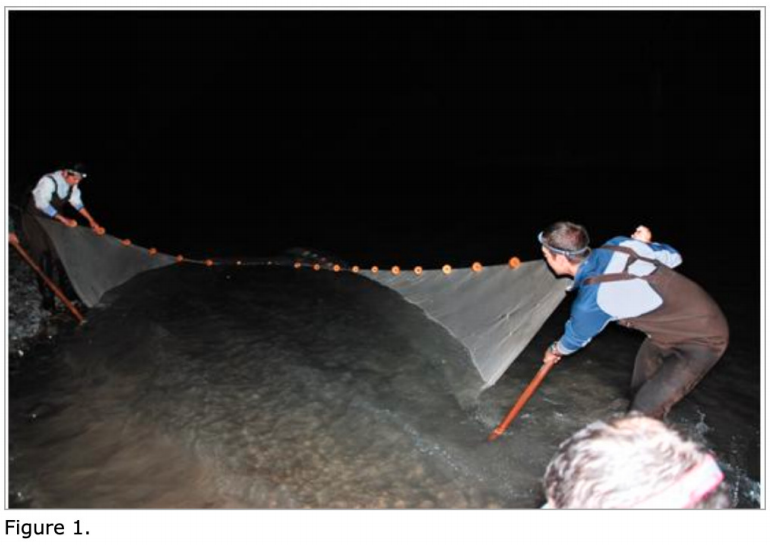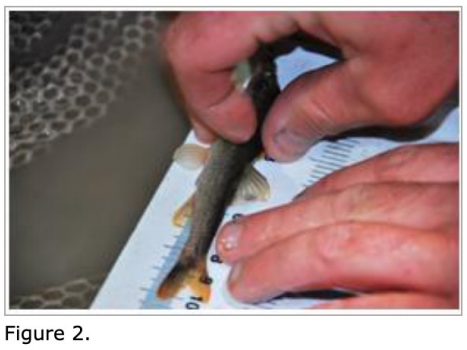It was the end of our third full day living on the Chilko-Chilcotin River and we had been searching for a suitable campsite for the last two hours. I was admittedly slowing down but I knew that the "grass is always greener downstream" as Aaron would put it. I believed we would happen upon a suitable camp but I couldn't have dreamed about the excitement this particular camp would bring. We had experienced an amazingly productive day of science, seeing that we completed two island surveys, and enjoyed our float through pristine wilderness guided by dozens of Bald Eagles. Our ideal campsite finally showed up around a large bend in the river and we immediately colonized the large island for the evening. Amid the cries of "we can have a campfire" and "ooh, it's jumbalaya and brownies tonight", I heard a yet unspoken phrase; Dr. Moyle announced that we could "night seine" the water at the tail end of the island. I immediately responded, "I would love to night seine" and that "it would be no problem at all!" Of course, the rest of the fish crew was also very interested and we set off to accomplish our job after dinner.
Although most other people were happily gathering around the fire and digesting their meals around 9:30 PM, I was eagerly putting on my waders! The cool neoprene was a shock at first but I was determined to get some new species of fish and hopefully larger fish by sampling at the later time of day. We hypothesized the fish would have a harder time escaping the net due to the low visibility and some of our research in preparation for the trip led us to believe that more fish move into shallow water at night to feed. There was science to be accomplished and our collection team marched behind Dr. Moyle to the seining area in a time efficient manner. I was extremely excited to get to work at this point and I offered to pull the first seine. I had to wade out to the edge of the current and realized that the bottom was mostly mud with a few sparse cobbles. However, there was no time to think twice and I began the pull upstream using all of my concentration to remain balanced. I had to use my entire body weight to lean on the seine pole as I moved through the water and I was shrouded in darkness; Dr. Moyle had us turn off our head lights once the seine was in position so the fish wouldn't be affected.
The first haul was a great success as we landed some large bull trout, mountain whitefish, and suckers on the muddy shore. I proceeded to wade out into the current and pull the next 7 hauls underneath the starry sky. The adrenaline was pumping through my body and a few near slips hardly had me second guessing about the dreadful swim I could have experienced, because I was so determined to see more fish! In the end, we saw 6 species of fish during the hauls that night and only 4 of those species when we seined the same areas the next morning. The bull trout and the largescale suckers we observed were over 200mm and we did not capture any during the day, which supported our hypothesis. Furthermore, we observed considerably more and much larger rainbow trout at night versus during the day. Lastly, we observed the largest longnose dace of the entire trip in one of the seining hauls.
We finally headed back to camp after our last haul to discover that the rest of our Ecogeomorphology group mates had all turned in for bed. I had planned for a glorious return to camp that was supposed to include warming up and recounting the night seining tales around the fire! In the end, I restarted the fire and stayed up gazing at the stars while the cold slowly wicked from my body. It was truly an initiation to another level of seining that evening and I dreamt of large fish as I slept peacefully in my tent.



